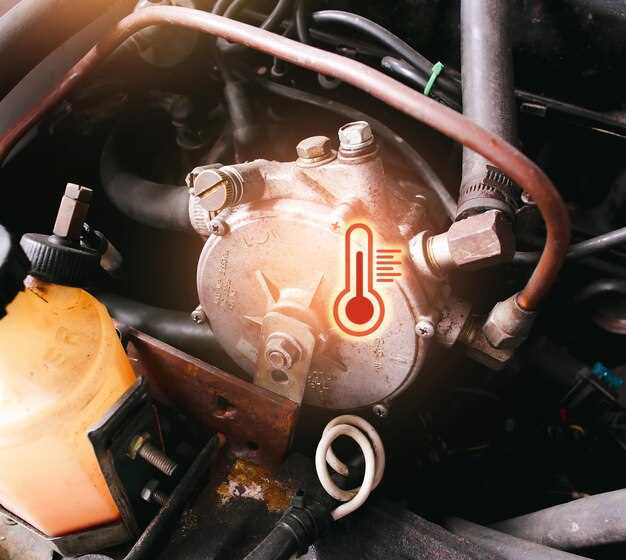
Driving at high performance can be exhilarating, but it also puts a significant strain on your vehicle’s engine. One of the most critical challenges that high-performance drivers face is overheating. An engine that overheats can lead to severe damage, reduced efficiency, and ultimately costly repairs. Understanding how to effectively manage your engine’s temperature is essential for maintaining optimal performance.
In this article, we will discuss various tips and strategies that can help you keep your engine cool during intense driving sessions. From regular maintenance practices to innovative cooling technologies, these insights will equip you with the knowledge necessary to prevent overheating and ensure that your engine runs smoothly under pressure.
By taking proactive measures to monitor and control engine temperature, you can enhance your driving experience while extending the lifespan of your vehicle. Whether you’re a seasoned racer or a weekend enthusiast, understanding the importance of engine cooling is crucial for anyone looking to maximize their driving potential.
Identifying Signs of Overheating Before They Escalate
Monitoring your engine’s temperature is crucial for high-performance driving. Recognizing early signs of overheating can prevent severe damage. One of the first indicators is an unusual increase in the temperature gauge; keep an eye on it during intense driving sessions. If you notice it approaching the red zone, take action immediately.
Another sign is a change in engine performance. A lack of power or sluggish acceleration can indicate overheating. Additionally, be attentive to any unusual smells, such as burning coolant or oil, which may signal overheating issues. A hissing or boiling sound from the engine bay can also suggest that your engine is struggling to maintain optimal temperatures.
Excess steam or smoke from the engine increases the urgency to investigate cooling problems. Also, check for coolant leaks under the vehicle; these can stem from failed hoses or a damaged radiator. Regularly inspecting your coolant level can help identify potential overheating before it becomes critical.
Lastly, be aware of dashboard warning lights specifically related to engine temperature. If you see a warning light activate, it is a clear signal to pull over and assess the situation. Prompt action can save your engine from irreversible damage and ensure safe high-performance driving.
Optimal Coolant Mixtures for Extreme Conditions

When pushing your vehicle to its limits during high-performance driving, selecting the right coolant mixture is crucial to prevent overheating. In extreme conditions, a traditional 50/50 mix of antifreeze and water may not suffice. Instead, consider adjusting the ratio according to your driving environment and temperature fluctuations.
A mixture of 70% antifreeze and 30% distilled water is often recommended for hot weather conditions. This higher concentration of antifreeze raises the boiling point of the coolant, providing better protection against overheating. Additionally, using a high-performance coolant that contains additives for improved thermal conductivity can further enhance heat dissipation during intense driving sessions.
In colder climates, maintaining a mixture closer to 60% antifreeze and 40% water can prevent freezing while still providing efficient cooling. It’s essential to regularly check and maintain the coolant mixture to ensure it meets the demands of extreme driving conditions.
Moreover, utilizing specialty coolants designed for motorsports can offer superior performance. These formulations often include components that reduce friction and improve heat transfer, which is critical under extreme loads. Always ensure compatibility with your vehicle’s cooling system to avoid corrosion or damage.
Ultimately, regularly monitoring coolant levels and temperature gauges during high-performance driving can help prevent potential overheating. Make adjustments to your coolant mixture based on the specific requirements of your vehicle and the environment in which you are operating.
Enhancing Airflow with Aftermarket Cooling Options

To prevent overheating during high-performance driving, upgrading your vehicle’s cooling system with aftermarket options can significantly improve airflow and thermal management. Technological advancements have led to several innovative solutions that enhance engine cooling efficiency.
One effective option is the installation of a high-performance radiator. Unlike stock radiators, aftermarket variants often feature larger cores and improved materials, allowing for greater fluid circulation and heat dissipation. Additionally, these radiators may utilize multiple rows or different fin designs to enhance airflow, further reducing the risk of overheating.
Another essential component is the performance heat exchanger. This device increases the surface area available for cooling, thus allowing heat to dissipate more effectively. By maintaining optimal temperatures, it contributes to improving overall engine performance and longevity.
Fans play a crucial role in promoting airflow. Upgrading to electric fans can provide a significant advantage, as they can be controlled more precisely than mechanical fans. High-flow fans can boost airflow dramatically, ensuring that coolant is circulated efficiently and preventing thermal buildup during aggressive driving scenarios.
For those seeking a more integrated solution, consider a performance air intake system. By improving the intake airflow to the engine, these systems not only enhance power output but also facilitate better cooling. Cooler intake air translates to lower combustion temperatures, which helps mitigate the chances of overheating.
Finally, utilizing ducting and vents strategically can further guide airflow to critical engine components. Ensuring that air is channeled effectively can enhance cooling capabilities, particularly during high-stress performance situations. By implementing these aftermarket cooling options, drivers can significantly reduce the risk of overheating and enjoy a more reliable driving experience.






